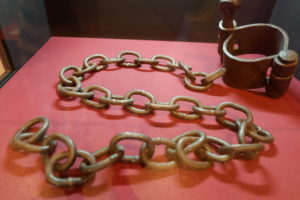By Bereket Alemayehu (Photographer, writer and social activist based in Seoul, South Korea)
An emotional uphill is to be experienced when visiting historical places like national cemeteries, war memorials and prisons from the old eras. Recently, I experienced just that while visiting the famous Seodaemun prison museum in Seoul, South Korea. The prison was built by Japanese in 1908.
For about 80 years (1908-1987), the prison represented a very dark history of brutal imprisonment, execution site, terrifying torture basements with unthinkable human body mutilation tools, and human rights abuses of Korean liberation activists. From 1910 to 1945, the Japanese took over every aspect of internal administration in South Korea. As a result, countless Koreans lost their landholdings, lived in constant fear of the colonial secret police, and seethed with repressed anger and resentment against their alien overlords. The Seodaemun prison also reminds all such historical facts.

What is interesting however, is that even after the Japanese colonial era ended, the prison continued to serve as a place to detain pro-democracy and freedom activists against the dictatorial regimes in Korea that succeeded the colonial era Japanese administrations.
My experiences in Seoul are reminiscent of what Mussolini’s Italy did in Ethiopia
There was quite a similar history of foreign aggression in my country, Ethiopia as well. We had also suffered from some dark history due to Colonial Italy’s failed attempt at colonizing our country. In fact, this occurred twice by Italian forces, the first one being from 1887-1889, which ended by the Italian defeat at the battle of Adwa in 1896 and the last one, a revenge invasion by the then-fascist Italian regime from 1936-1941.
After Mussolini’s revenge invasion in 1936, Ethiopians were tormented for five years by aggressive fascist Italy. The city of Addis Ababa still shows memorial landmarks of several massacres, executions of national patriots, religious leaders, imprisonment and exile of aristocrats and citizens.

In Korea, following The Independence Movement Declaration of March 1st, 1919, a landmark for Korea’s liberation from colonization, Seodaemun prison, which could normally holding around 500 prisoners, had held three thousand imprisoned liberation activists. Afterwards, the Japanese retaliated with brutality and punishment during which several thousand Koreans perished.
Similarly, during the fascist invasion of Ethiopia, on one fateful day, February 19th, 1937, notable patriots attempted an attack on the fascist Governor General, Rodolfo Graziani, which Italians responded with the most gruesome massacre of Ethiopian innocent civilians at my hometown, in Addis Ababa and the surrounding villages.
Due to the attack by Graziani’s colonial forces, about 30,000 Ethiopians were murdered and many sent to prisons. Not only that, but Italian fascist forces also built concentration camps, and execution sites. History recorded that there were Ethiopian war prisoners as far as Danane prison near Mogadishu city in Somalia and Asinara island on Mediterranean Sea. One of the notorious prisons in which prisoners were abused was called Alem Bekagn Prison, located about 20 minutes walking distance from the center of Addis Ababa. In fact, the headquarter of the African Union was built on the site of the prison in 2012.

Similar to South Korea’s Seodaemun, Alem-Bekagn, was also used during the Italian occupation of Ethiopia and subsequently by Ethiopian rulers to house political prisoners in Addis Ababa.
Growing up in Ethiopia, I used to go to the AU headquarters for events, business meetings and visits. Every time I visit there, however, I think of those memories I learned about the prison; I think of its towering gates, high built walls and security posts.
As history tells us, for ancient nations, like South Korea or Ethiopia, the road to national liberation, freedom, democracy, equality, advancement in economy, development, technology and education has never been easy. But whatever they achieved is the result of the suffering and sacrifices of ordinary citizens. Such stories symbolize a pride that was kept regardless of humiliation.
(The views expressed in this post do not necessarily represent the views by East-Africanist. The views are solely that of the author.)





